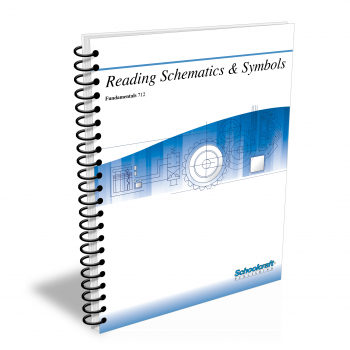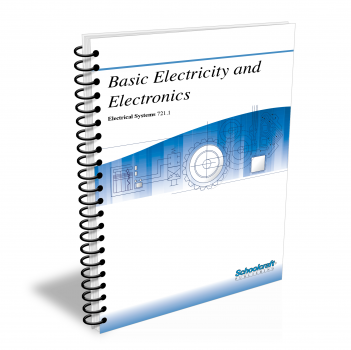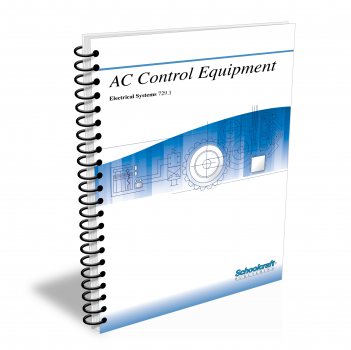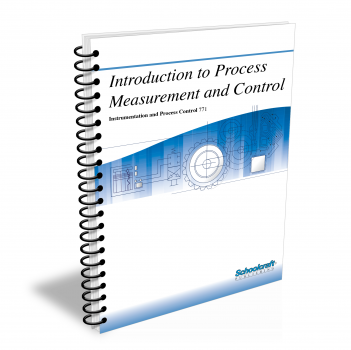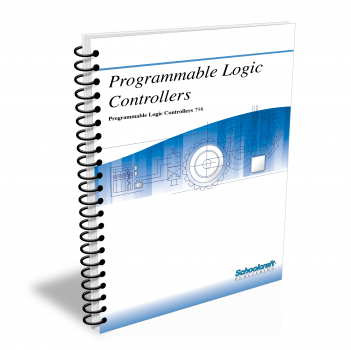Transformers and AC Circuits
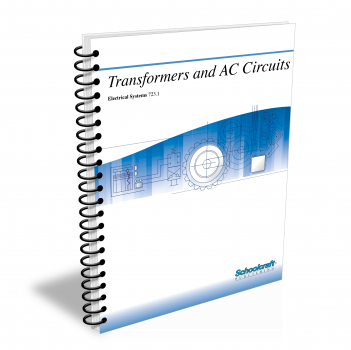
Course Number: 723.1
The Transformers and AC Circuits textbook covers differences between DC and AC circuits. Explains AC sine wave, using vectors to solve AC problems, calculating impedance in circuits having inductance, capacitance, and resistance, AC power relationships in single-phase and three-phase circuits, and principles of transformer maintenance.
Does your curriculum require additional topics not included in this textbook? Build a customized version of the Transformers and AC Circuits textbook below.
This textbook has been recently updated
to include topics lists, objectives, & key terms for every chapter.
Recommended Contact Hours – 15
Preview a Chapter
Available Supporting Material
- Table of Contents
- Exam Copies
- Suggested Titles
Table of Contents
Chapter 1: Principles of Alternating Current
Topics: AC and DC electricity; AC waveform; Peak-to-peak, average, effective values; Energy storage; Faraday's Law; Basic circuit concepts
Learning Objectives:
- State of definition of a waveform.
- Demonstrate how to calculate the frequency of an alternator's output.
- Explain how to calculate an effective value.
- Name the kinds of values that must be used when applying the dc rules and laws to ac circuits.
Chapter 2: Mathematics in AC Circuits
Topics: Potential difference; Angles and degrees; Vectors applied to AC circuits; Graphic and math solutions; Calculating instantaneous values
Learning Objectives:
- Describe a triangle.
- State the definition of a vector.
- Identify the vector representing resistance in a vector diagram.
- Demonstrate how to calculate the total impedance in an ac circuit.
Chapter 3: Inductance and Inductive Reactance
Topics: Factors affecting inductance; CEMF; Inductive reactance and time delay; Phase angles; Impedance; Mutual induction; Inductors
Learning Objectives:
- Name the property of a coil that makes it resist changes in current.
- List the factors that determine inductance in a coil.
- State the definition of counter electromotive force.
- Demonstrate how to convert a frequency in Hz to a frequency in radians per second.
Chapter 4: Capacitance and Capacitive Reactance
Topics: How a capacitor works; Factors controlling capacitance; Kinds of capacitors; Time constants; Capacitive reactance; Phase angle
Learning Objectives:
- Name the parts of a capacitor.
- List the factors that affect the amount of charge stored in a capacitor at a given potential difference.
- Demonstrate how to install a multisection electrolytic capacitor.
- State the definition of capacitive reactance.
Chapter 5: Impedance
Topics: Impedance in series circuits; Phase angles; Resonance in series circuits; Impedance in parallel circuits
Learning Objectives:
- State the definition of impedance
- Explain how to calculate the impedance in a series ac circuit.
- Demonstrate how to find the value of a phase angle for a circuit.
- Explain how to calculate the impedance in a parallel circuit.
Chapter 6: Power and Energy in AC Circuits
Topics: Work and energy; Power in resistive, inductive, and capacitive circuits; Power factor correction; Power capacitors; Capacitor installation
Learning Objectives:
- State the definition of power.
- Demonstrate how to calculate power in an inductive circuit.
- State the reason why capacitors are added to circuits to increase the power factor.
- Explain how to install capacitors correctly.
Chapter 7: Three-Phase Circuits
Topics: Three-phase alternators; Y- and delta-connected alternators; Power in three-phase circuits; Load connections; Measuring power
Learning Objectives:
- List the main advantages of the three-phase ac system.
- State the definition of phase sequence.
- Demonstrate how to calculate the RMS power in a single-phase circuit.
- Explain how to measure the total power consumed by the load in a three-phase circuit.
Chapter 8: Principles of Transformers
Topics: Magnetic field; No-load operation; Transformer construction, losses, and efficiency; Autotransformers; Instrument transformers
Learning Objectives:
- Explain the difference between the primary winding and the secondary winding in a transformer.
- Explain how the windings are positioned in a core-type transformer.
- List the kinds of losses that occur in transformers.
- State the definition of a current transformer.
- List the functions of an instrument transformer.
Chapter 9: Transformer Applications
Topics: Transformer designation, insulation, cooling, and polarity; Single- and three-phase transformer connections; Installing transformers
Learning Objectives:
- Name general kinds of transformers.
- List the temperature limits for each class of transformer insulation.
- Explain how oil-immersed transformers are cooled.
- Name the common methods of connecting three single-phase transformers for three-phase operation.
- Explain how to select the correct location for a transformer.
Chapter 10: Maintaining Transformers
Topics: Preventive maintenance; Inspection; Transformer liquids; Transformer failure; Testing; Disassembly and inspection
Learning Objectives:
- Explain what to look for during an inspection of sealed transformers.
- List problems that are indicated by an increase in transformer operating temperature.
- Demonstrate how to perform a breakdown test.
- Explain how to locate the exact point of a leak in a welded joint below the liquid level.
- List the steps in inspecting a transformer when a winding fails.
Request Exam Copies
Exam Copies
Ready to see a copy of our textbooks? After selecting which textbooks you’d like to review for your course, you can submit your request by either logging in or creating an account so we know where to ship your exam copies. A representative from Schoolcraft will contact you to confirm and finish processing your request.
Exam copies are always free and yours to keep.
Selected Exam Copies
none selected
* Maximum of five copies can be ordered
